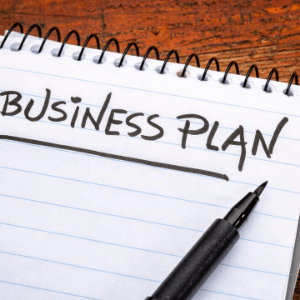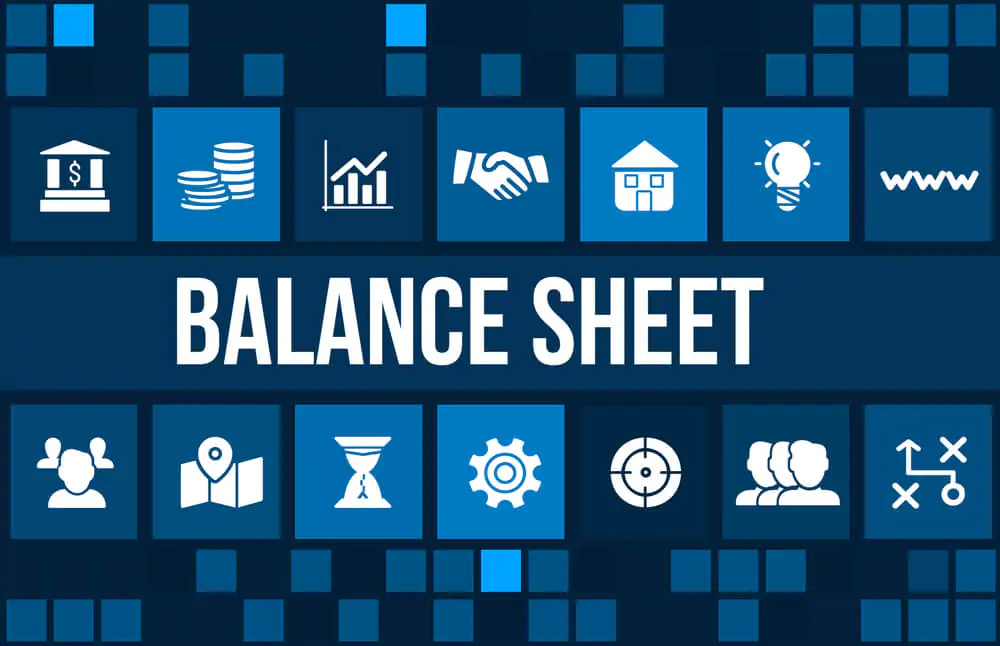
Opening a coffee shop is both exciting and challenging.
If you want your business to succeed, learning how to write a coffee shop business plan is important.
Coffee shop owners enjoy a great deal of freedom when it comes to the products and services they offer, the decor within the establishment, the people they hire, and many other aspects of the business.
Even small coffee shops can turn a substantial profit. Why?
Well, coffee shops also add value to the surrounding community, giving residents a safe, uplifting place to gather.
However, some coffee shops will fail.. In fact, the U.S. Small Business Administration reports that approximately one-third of small businesses will fail within the first two years.
By the end of five years, half of all small businesses will fail. To give your coffee shop the best chances of success from the first moment the doors open, you need a solid business plan. To create an effective business plan, follow the steps below.
Step 1: Brainstorming And Market Research
Before you begin writing your coffee shop business plan, spend some time learning about business plans in general. Business plans for all types of businesses usually have six different sections: executive summary, opportunity, execution, company and management summary, financial plan, and appendix.
You should have an executive summary at the beginning of your business plan, although it may well be the last part of the plan that you write.
It is also a good idea to spend some time brainstorming basic ideas for your new coffee shop and performing market research. Write down any ideas you have for the business so you can refer to them later. As you research the market, be sure to focus on your specific region for the best results.
If other people will have a stake in the business, consider including these individuals in the process of brainstorming and writing the business plan.
Step 2: Opportunity Section
The next step in completing your business plan involves constructing the opportunity section of the document. This section focuses on defining several key components of your business, including the products you intend to provide, the problems you will solve within the community or market, your target consumer, and your competition.
Identifying Problems And Solutions
Begin this part of the plan by outlining the problem you will solve for consumers and how your solutions will be different from the competition. Some examples of problems a new coffee shop may solve include:
- Consumers have no access to gourmet coffee within a reasonable driving distance.
- Consumers lack good places to congregate in town.
- Consumers have access to inferior coffee and/or bakery options only.
- The area’s coffee shops have poor service, high prices, or some other characteristic that causes problems for customers.
Now, describe the strategy you will use to solve the problem you have defined.
For example, if you are establishing the town’s first coffee shop, you may be hoping to provide consumers with access to gourmet coffee and bakery products closer to home. On the other hand, if you will be competing with other coffee shops in the area, you may be hoping to provide better quality products, a better atmosphere, and/or better prices.
Target Market

Your business plan’s opportunity section should also define your target market. Although you may be hoping that your new coffee shop will appeal to everyone in the area, you need to narrow down this target market, so you can focus your efforts on the people most likely to frequent your establishment.
For example, your target market may be young adults between the ages of 18 and 35.
Alternatively, you may be looking to advertise as a family-friendly establishment, focusing your efforts on people with children. In some cases, you may define two or more market segments you hope to target.
Competition
To complete the opportunity section of your business plan, take some time to research and describe your coffee shop’s competition. Are there other businesses in the area offering the same types of solutions?
Examples may include small coffee shops, as well as chains. If you plan to sell baked goods along with coffee, you may consider local bakeries or counter service restaurants as competition as well.
Step 3: Execution Plan
The execution section of your business plan focuses on the exact strategies and tools you will use to bring your coffee shop vision to life. This section will include information about marketing plans, sales strategies, the specifics of your operations, and your goals and objectives for the business.
This section of your business plan is one of its most important components, as it gets into the details as to how you plan to run your business and achieve success.
Marketing Plan
The purpose of this part of your business plan is to determine how you will reach your target market and draw them into your coffee shop. This plan should include details about the pricing structures you will use for the different products you serve, as well as information about your advertising strategies.
Begin the marketing plan by crafting a position statement. This statement describes how you will present your coffee shop to customers and how you will set yourself apart from the competition.
For example, your position statement may describe your business as a high-end gourmet establishment with quality products that aren’t available anywhere else.
On the other hand, if you are hoping for a more casual coffee shop, your position statement may describe your establishment as low-key and more affordable than other options in the area.
Your marketing plan also must include a pricing structure. As you determine prices for the different products you intend to sell, remember that prices should cover your costs, comply with market rates for the same product, and turn a profit. Your pricing structure will be intricately tied to your positioning statement as well.
Finally, spend time developing a strategy for advertising and promoting your coffee shop to the public.
Operations
The operations section of the business plan lays out the details of your business’s day-to-day operations. Having a solid operational strategy will make a significant difference in the efficiency and profitability of your establishment. Subsections that should be covered in this part of the business plan include:
- Sourcing – Before opening a coffee shop, you will need to find sources for the ingredients in your products, including coffee and any food products you want to serve.
- Milestones – Your milestones are your planned goals that indicate what you want to accomplish with your coffee shop over time. For example, you may indicate that you want to open by a certain date or serve a specific number of customers within a certain amount of time.
- Metrics – The metrics section of operations will indicate how you plan to measure your coffee shop’s performance. Examples of metrics include revenue, profit, number of customers served, and number of repeat customers.
- Assumptions and risks – The assumptions and risks section outlines the factors you assume will support your business, as well as the factors that threaten the success of your business.
Step 4: Company And Management Summary
The company and management summary covers the structure of your business and names the key players. In a smaller coffee shop, this section of the business plan may be relatively short. However, you should still list the people who are invested in the success of the establishment.
Team Overview
The team in charge of your coffee shop may consist of the owner as well as the people you have hired to act as managers. If you have not yet hired anyone to act as a manager, you can list the qualifications you hope to see in prospective managers instead.
In fact, if you haven’t hired anyone yet, constructing this part of the business plan is an exercise that will help you figure out exactly how many people you will need to hire before your coffee house can have its grand opening.
Company Overview
In this section, you can include a mission statement that describes the way you will approach customer service. Ideally, this statement should be only one or two sentences in length.
Your company overview can also include information about the business’s location and its legal structure. If your coffee shop has an interesting backstory, you can include a subsection on company history as well.
This section is optional for many coffee shop businesses, but it is a good opportunity to solidify your business’s identity and purpose. If you are seeking help from investors, including this section in the business plan can improve your chances of success.
Step 5: Financial Planning

The last major part of your coffee shop business plan deals with finances. For many people, this is the most difficult part of the plan to write. However, because it will play an important role in the success of your coffee shop, having a solid financial plan is essential.
In order to construct your financial plan, you need to draft several financial statements. These statements include:
Sales Forecast
The coffee shop’s sales forecast is designed to predict how your sales revenue will look over the first few years of your business. If you don’t have much experience in the coffee business, it may be difficult to guess how much you will expect to sell.
If you are not sure how to begin, you can start with average sales information for other businesses in the area and adjust it based on different factors, such as the fact that your business will be new and won’t have regular clientele immediately.
When constructing your sales forecast, remember to take the direct expenses you will incur to make your sales into account. These expenses, which are also known as the “cost of goods sold,” will include any expenses you incur when creating your menu items.
Examples of direct costs include the cost of ground coffee, syrups, and bakery product ingredients. Do not include expenses that are not directly related to products, such as the cost of business insurance or the wages you pay to employees.
Personnel Plan
The personnel plan you create for your coffee shop will include detailed information about the expenses related to employees. These expenses include the wages you will pay as well as other costs such as insurance and payroll taxes.
Although larger businesses may break this information down based on categories of people, smaller coffee shops will usually list employee costs on an individual basis.
Profit And Loss Statement
Your profit and loss statement is the financial statement that demonstrates whether your business is making a profit. If your business does not make a profit, this statement will demonstrate the size of the loss.
Because you have not yet started operating your coffee shop, all of the information on this sheet will be hypothetical when you create your business plan. However, this statement still has value for planning purposes.
Your profit and loss statement will pull information from the two financial statements you have already created (the sales forecast and personnel plan). It will also incorporate other information that hasn’t been covered yet, such as the other expenses you will incur while running your business. Examples include building rent, utilities, and insurance expenses.
In addition, your profit and loss statement should include a final figure that takes all of your hypothetical revenue and expenses into account and calculates either a profit or a loss.
Specific components of a profit and loss statement include:
- Income – This will include the estimated amount of money you expect to bring in from coffee sales and any other source.
- Cost of goods sold – This figure will include the cost of ingredients and other items you must purchase in order to make and serve your coffee, bakery items, and anything else your coffee shop sells.
- Operating expenses – These expenses are indirect expenses associated with running your coffee shops, such as the cost of insurance, rent, and wages paid to baristas.
- Gross margin – Your coffee shop’s gross margin can be calculated as the cost of goods sold subtracted from its total sales.
- Miscellaneous expenses – If you have expenses related to depreciation, taxes, interest, or a similar cost, list them here.
- Total expenses – This figure is the total of all operating expenses and miscellaneous expenses for your coffee shop.
- Operating income – The operating income is your coffee shop’s earnings before taxes, interest, and other such expenses have been subtracted. To calculate this figure, start with your sales total and subtract the cost of goods sold and total operating expenses.
- Net profit or loss – Your net profit or loss is the bottom-line figure that tells the exact amount of profit or loss for your coffee shop.
Balance Sheet

Your coffee shop’s balance sheet is a basic overview of the business’s financial health. This statement will list all of your company’s assets as well as its liabilities. Assets may include a building (if owned) and equipment. Liabilities include any unpaid debts, such as business loans and outstanding employee wages.
Cash Flow Statement
Your business’s cash flow statement is designed to track the flow of cash in and out of your business over time. Most cash flow statements will begin with the amount of cash you currently have on hand. The statement also incorporates anticipated income and expenses.
The coffee shop’s cash flow statement will help you anticipate how your business’s buying power and needs will change over time, so you can make wise financial decisions.
Exit Strategy
The final section of your financial plan is your exit strategy, which will include details about how you will end your business. If you are just starting out and as such don’t have any plans to sell your business, this section could be omitted or kept very short.
If you decide to include this section, it should describe your ideal situation for leaving the coffee shop business. For example, your exit strategy may involve merging with another coffee shop or chain. Alternatively, you may hope to sell your business to a new owner.
Step 6: Executive Summary
Although the executive summary is usually listed first in a business plan, it is easier to construct this component of the plan after the other sections have been completed. The executive summary section will introduce your coffee shop and provide an overview of the remainder of your plan.
Your executive summary be suitable as a standalone document if necessary. As you construct your executive summary, be sure to include: As you construct your executive summary, be sure to include:
- The problem your coffee shop solves
- The way your coffee shop solves the problem
- The coffee shop’s target market
- The coffee shop’s competition
- An overview of your management plans
- A summary of your finances
- The milestones you hope to meet
The Final Word On Your Coffee Shop Business Plan
Constructing a detailed, useful coffee shop business plan takes time and research. If you are having trouble getting started, consider reaching out to a professional for help. You may also be able to find a business plan template online to help guide your writing.
Coffee Shops Business Guides
10 Most Profitable Things To Sell In A Coffee Shop (Besides Coffee)
How To Come Up With Coffee Business Names
Coffee Shop Marketing Mix: Get It Right And Earn More Money
How To Attract Customers To Your Coffee Shop
Coffee Shop Branding: Get These 5 Key Elements Right
7 Top Coffee Home Business Opportunities
Coffee Shop Furniture: A Buyer’s Guide
Coffee Shop Equipment: Don’t Overlook These 9 Essentials
Best Coffee Shop Tables: 6 Top Choices
How To Create Coffee Shop Marketing Plan: A Step By Step
